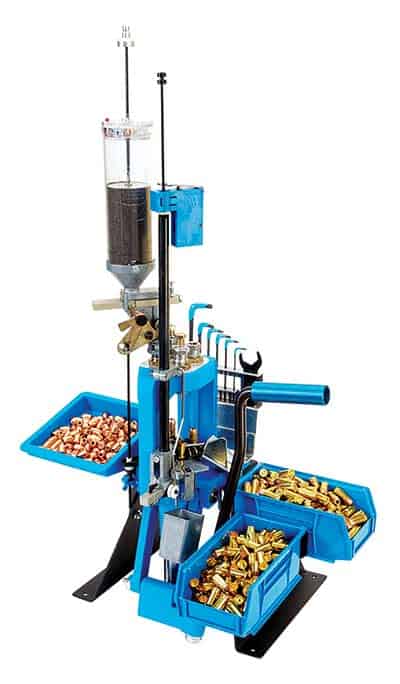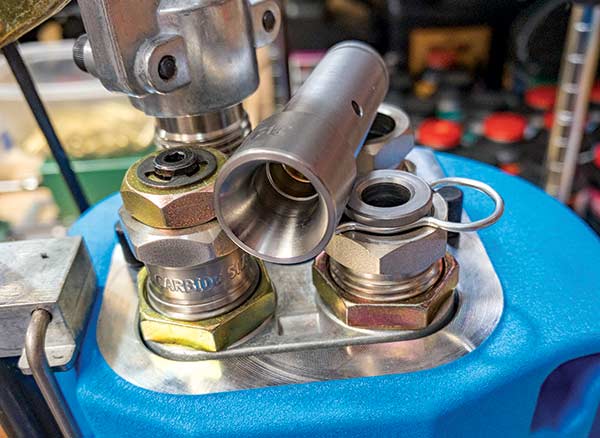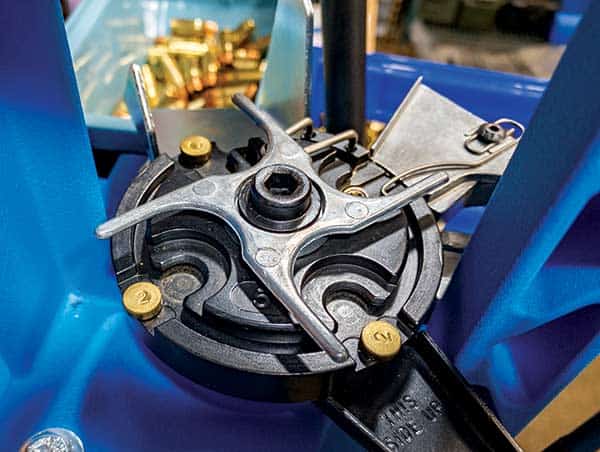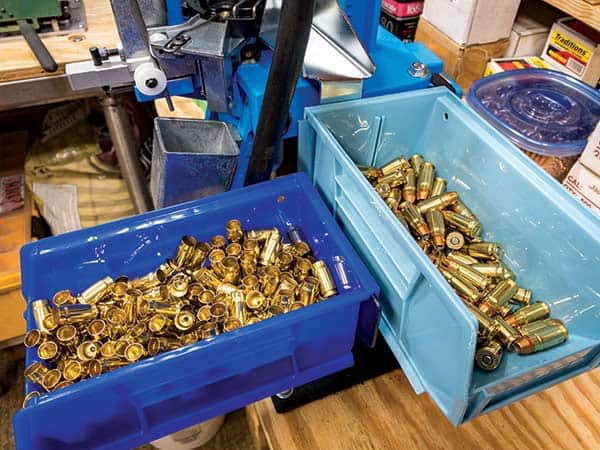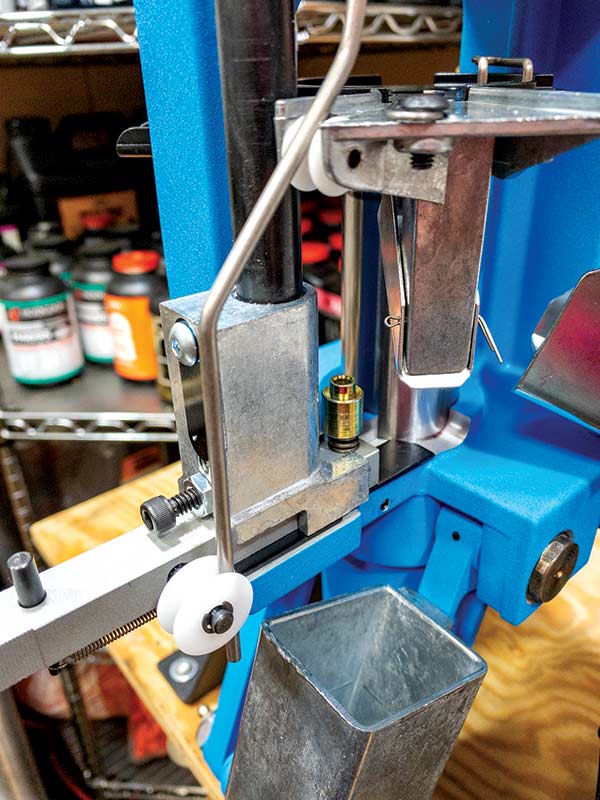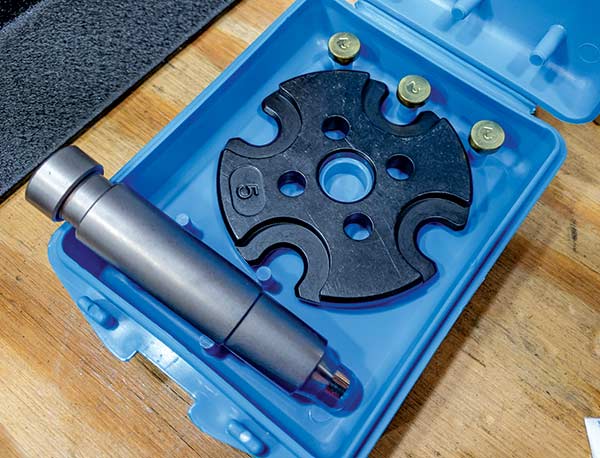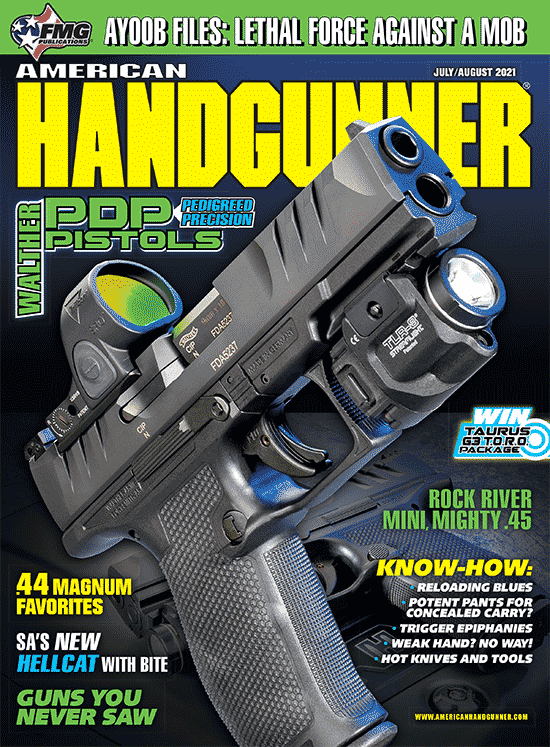Reloading Blues
Dillon's 550C Precision Loading Machine
We’ve had plenty of surprises over the past year, although I’m still waiting for those scary flying monkeys from Wizard of Oz to make a dramatic entrance. With guns and ammo flying off the shelves thanks to pandemics, riots and business as usual from those common sense-sucking leeches of society (politicians), it’s a good time to think about reloading. While it’s always a stellar idea to start with a simple single-stage reloading press, there comes a point where volume matters, and that’s where the joy of progressive reloading begins.
I’ve been reloading for a couple of decades now. Heck, I love it so much I even wrote a book — The Practical Guide to Reloading Ammunition. Yes, I’m a reloading geek at heart. Over the years, I’ve been through most all the brand colors of reloading gear. Red, green, more red, yellow, black, mauve and a delightful shade of fuchsia. But for whatever reason, I’ve never spent quality time with … blue.
If you’re up to speed on reloading gear, you might recognize “blue” as the flagship color of Dillon Precision. Sure, I’ve used components of theirs over the years — the Super Swage 600 is a lifesaver for dealing with military crimped brass like 5.56 and 7.62. But what I haven’t yet done is take the plunge into “blue” reloading presses. They’ve always had the reputation of high-end gear with prices to match, so I decided to see for myself how the value scales tip. Will the age-old apothem, “Buy once, cry once” hold true?
Progressive: The 550C
Confessions first. I freely admit I’m an auto-indexing snob. When I ventured into “blue” progressive reloading, I was hell-bent on trying out an auto-indexing model. For those new to reloading, this means a pull of the handle automatically advances the shell plate and cases to the next stations. In my mind, and you know what they say about assumptions, a progressive press one has to manually advance couldn’t be much faster than frozen I Can’t Believe It’s Not Butter oozing uphill.
As proof I’m not as stubborn as I look, I allowed Mark at Dillon to talk me into a trial of the 550C model. It’s a progressive press with four die stations, automatic priming and powder dispensation. But you have to manually advance the shell plate after each yank on the handle. Hold this thought for a hot second. To explain how this worked out, we need to take a step back and review the operation of the 550C.
As for caliber choice, I figured I’d give the blue machine a real test using a finicky handgun caliber — .357 SIG. It’s a bottleneck case, so sizing can be an adventure. It also takes small pistol primers, so there’s no room for imprecision in the priming system. And the limited case neck length demands absolute precision and consistency for firmly seated and safe, cartridges. If this blue machine was going to succeed or fail, a caliber like .357 SIG would be sure to expose its strengths and weaknesses.
Workflow Efficiency
In this setup you’ll notice I’ve got the bullet tray mounted on the left, brass and completed cartridge trays on the right, and the roller handle installed. These all contribute to zen-like production.
Step one involves inserting an empty case with your right hand. An adjustable spring guide eases it into place in the shell plate. Concurrently, the left hand places a bullet from the optional tray into the freshly sized, belled and powder-charged case. Your right hand is now available to pull the handle. The roller add-on prevents friction on the hand and makes the pull easier.
Step two is easy. Since your left hand is sitting right near the shell plate’s advancement levers, flick it forward with your thumb. You can adjust tension of the movement, so it pops into the next position effortlessly. Detent features ensure the shell plate locks into the right position, regardless of “thumb flick” inconsistencies.
Step three? Repeat. That’s it.
Manual indexing didn’t slow me down one iota. In fact, it made things easier. If ever there’s a glitch (rare) or a need to double-check a cartridge, I could stop and inspect, or even move the shell plate back a step if necessary. That’s not always easy on an auto indexing press — with some models it’s an exercise in frustration and reverse engineering as you embark on a crusade of unplanned disassembly.
I should note a difference in approach to the shell plate. Other progressive presses use springs to hold cases in place in the plate. When a case advances to the next station, a cutout in the plate secures most of the case while the spring holds in the case in the cutout. Dillon uses removable pins. The benefit is the case can’t move — at all — with that rigid pin holding it in place. There is literally no wiggle room. I believe this is one of the reasons the press runs so smoothly overall. Cases at each station are perfectly and rigidly aligned with their respective dies.
Priming Precision
The first thing I look at in a progressive press is the priming system design. It’s almost always the weak point in the system because those little buggers are tiny and finicky. Oh, and they can explode if not treated with care. Whether belt fed, tube fed, or delivered by tiny storks, the priming design and precision of parts construction has to be nothing short of perfect else you’re headed for a life of reloading frustration. I can’t tell you how many times a press with less than absolute perfect priming plunger alignment has fouled me up. If some primer insertions feel rough or heavy, you’re dealing with something ever-so-slightly out of spec. I experienced precisely zero of this with the 550C. Every single primer has seated with identical smoothness and pressure.
The 550C uses a tube feed system. After righting with a primer tray, use the included pickup tubes to restock the reservoir with another hundred and you’re off and running. The pickup tube “nozzles” are perfectly sized, requiring almost no pressure to lift a primer into the tube. Ahh, the joy of well-thought-out details …
Once you start operation, you’ll see spent primers falling down a chute with a trap door. As you lower the shell plate, the trap door opens, dropping the spent primer into a metal trash bin. Concurrent with this operation, a sliding bar moves a primer cup back to the tube feed where a fresh primer drops into place. As you move the handle forward, the shell plate lowers over the primer cup. A gentle push forward on the handle seats the primer effortlessly. The 550C comes with an electronic alarm, letting you know when you only have a handful of new primers left in the tube.
Powder
Station two uses a case mouth belling insert that comes as part of the caliber conversion kit. When the case is raised to the dispenser, the insert bells the case mouth. It’s adjustable so you can flare as much or as little as you like.
The powder system is designed with a belt and suspenders approach. As you pull the handle, raising the shell plate to the dies, you also drop the powder into the case. On the handle upstroke, a combination of springs and a pull-down rod move the charge bar back under the powder reservoir and give it a shake to fill the adjustable powder bar cavity.
Over dozens and dozens of spot checks using a digital scale, I found the metering to be spot on consistent, drop after drop, thanks to the redundancy in the dispensing mechanism.
Seating And Crimping
The final two operations of bullet seating and crimping each have their own station on the 550C. That’s my preference anyway, so I was happy. While the Dillon 550C takes any standard dies, I chose to pair this setup with Dillon’s pistol dies to check out the full “blue” experience.
Blue Dies Matter
Don’t share this with the engineers at Dillon, but … I tested the .357 SIG dies without case lube. They are carbide (unusual in itself for .357 SIG dies), so in theory, they should work without any lube. However, the .357 SIG is a bottleneck cartridge, so one would think case lube is a must unless you enjoy extracting stuck cases from your expensive resizing dies.
The resizing process worked without hiccup on bare, dry brass, so, curiosity satisfied, I reverted to spraying my pile of ready cases with a quick blast of Hornady One Shot. This smoothed out the operation considerably thanks to reduced friction.
There are two other standout features of the Dillon dies.
First, except for the sizing die, the interiors are extravagantly flared. I don’t mean a little; I mean more like a giant funnel. A case at the seating and crimping stations can be out of alignment by a good quarter inch or so and still be guided into place. It’s a lot of extra machining, which leads to the higher price, but it’s a valuable feature.
Second, the die inserts like the seating plug are removable with the die still mounted in the press. A large locking spring secures the insert so it can be removed through the bottom of the die body for cleaning without impacting die adjustment. Why doesn’t everyone do this? The feature likely adds cost but is brilliant.
The Net-Net
When you buy a Dillon press, you’ll find a plethora of optional gear available. Bite the bullet and spend the money. You’ll be glad you did. Each add-on component makes the process faster, easier and more glitch-proof.
Reloading blues aren’t soulful or sad. Rather, the 550C presents an uplifting tune. There’s lots of good gear on the market, but you do get what you pay for. The difference between this blue 550C and other presses is it’s not a tool or loader. It’s a precision machine. Every detail has been thought out and constructed not just for speed, but reloading precision and process reliability. It just works. All the time. It’s well worth the $529.99 for the base model with a one-caliber conversion kit.
With every other press I’ve tried over the past couple of decades, I learn the nuances and inherent “finicky” attributes and develop ways to work around them. With the 550C, I’m still looking for those “finicky” attributes. In the meantime, I’ll just continue to churn out precision ammo.
For more info: DillonPrecision.com

